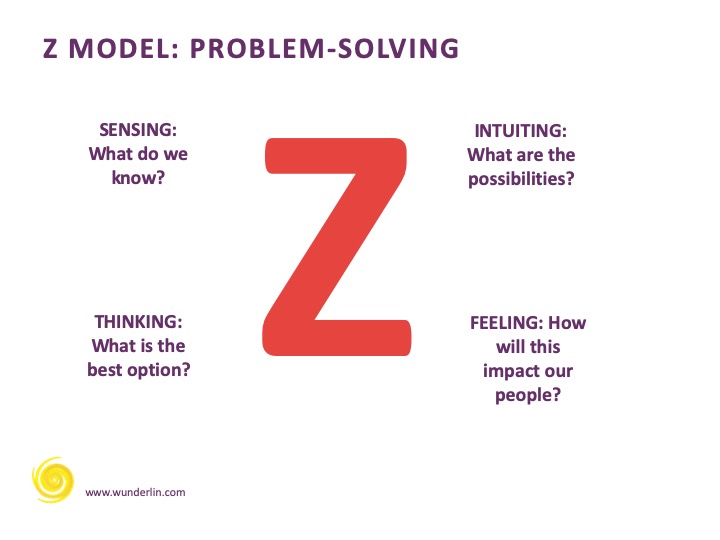Back in 2013, we published this article on personality assessment, and more specifically the Myers Briggs Personality Indicator or MBTI. Seven years later, it’s still one of our most popular blog articles. And while the results and findings of the MBTI are evergreen and backed by decades of research by Jungian psychologists, how you can best put those results to work today has changed. So we decided to give that information a refresh…
For this information on the go, listen to our podcast in the SoundCloud link above, or click to subscribe on your favorite platform: The Changing Times MBTI podcast.
The Basics:
People have MBTI preferences across 4 different scales– how they express themselves, interpret information, make decisions, and explore their options. At a high level, those 4 scales are:

Where We Get Our Energy:
- Extroversion (E): Prefers to get their energy from being around other people. Extroverts can be described as people who “thinks out loud”.
- Introversion (I): Prefers to get their energy from the inside world. This doesn’t mean introverts are shy; rather that they prefer to fully form ideas before voicing them.
How We Perceive Information:
- Sensing (S): Organizes data in a literal, factual way. Prefers details and structure to interpret ideas.
- Intuiting (N): Ideas are put together more like a movie. Intuiters tend to need less data and are able to do more “possibility thinking”.
How We Make Judgments:
- Feeling (F): Makes judgments and decisions by following a process based on personal values and the feelings of those around them.
- Thinking (T): Makes judgments and decisions by following a process that’s more rational and logical.
How We Go Out Into the World:
- Perceiving (P): Prefers to explore options; may prefer spontaneity.
- Judging (J): Prefers to cross items off a to-do list; may prefer firmer plans.
Personality Assessments Bring Awareness And Appreciation
For many, when getting back results on a personality assessment like the MBTI, is an exciting “ah-ha!” moment. “Oh that’s why my boss tells me I’m too quiet in meetings: I’m an Introvert!” That level of self-awareness in a work environment can be priceless.

Just as crucial is an appreciation for our colleagues’ preferences. Rather than getting frustrated with a co-worker who misses key data points, we can appreciate the way he or she draws together a story. Instead of assuming that when no one is talking, no one else has an opinion; we can ask explicitly for every one of our teammates’ thoughts. It’s important to note that many differing types will arrive at the same conclusion – they just take very different paths to get there.
The Z Model of decision making is a good way to make sure you’re playing to everyone’s preferences and strengths. Begin by asking “What do we know?” (Sensing), then “What are the possibilities?” (Intuiting), “Which choice is best?” (Thinking), and “How will this effect our people?” (Feeling).

Working Remote Is Tough…On All Personality Types
While much of the “new normal” is just…normal, it also presents a new kind of stress on you and your work colleagues. We have noticed that virtual meetings on video platforms present a different kind of energy drain. And not just on introverts; extroverts can get Zoom gloom too! As we noticed on this podcast episode:
“Working through Zoom is hard and weird for everyone; even extroverts are quiet.”
With all preferences feeling a potential drain from being on camera at work, we’re finding more success when we use the technology to work with all personality types. Here are our favorite tips:
- Get people prepared: We send out agendas, exercise instructions, and other important details the day before we facilitate meetings. It not only helps bridge the gap left by being remote, but also allows those who prefer Introversion, Sensing, and Judging to have more time to formulate their ideas and be ready for all the content we’re presenting.
- Use breakout rooms: In groups larger than 10, we’re taking advantage of working in smaller groups. It gives anyone who may not want to speak up in a large meeting a much more level playing field. Everyone might not hear their conversations, but the 3-4 people with them will have an impactful, more meaningful chance to connect.
- Cameras off: Build in space where everyone can turn their cameras off, or make it a norm that meeting participants can turn off video if needed.
- Don’t forget the conference call: If you don’t need to share a screen, be on camera, or have too large a group, try a retro conference call! It’ll give everyone a break from the more performative aspects of video conferencing, and may lead to more productive conversations.
- Capture action items: Be sure someone in each of your meetings is recording action items. If you’re doing a screen share, find a way to capture those visually so that those who prefer perceiving and judging can see their thoughts or tasks in writing.
Now that you’ve got our top tips for using MBTI assessments to work smarter, we hope you will go forth and be productive! Please contact us if you have questions about using MBTI, or if you are interested in working with us on an assessment and facilitated results discussion.

Other helpful resources:


Leave a Reply